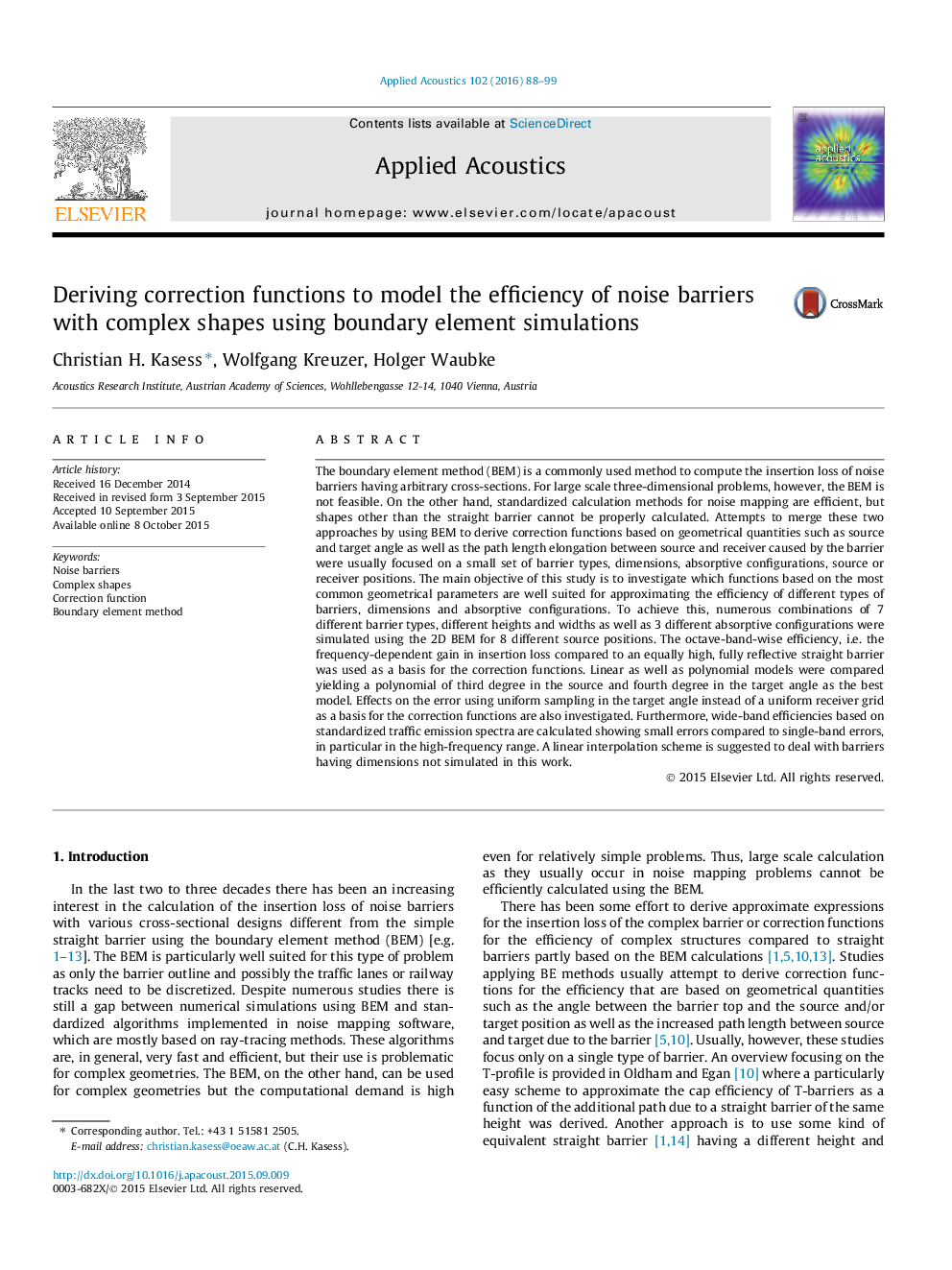| کد مقاله | کد نشریه | سال انتشار | مقاله انگلیسی | نسخه تمام متن |
|---|---|---|---|---|
| 7152581 | 1462406 | 2016 | 12 صفحه PDF | دانلود رایگان |
عنوان انگلیسی مقاله ISI
Deriving correction functions to model the efficiency of noise barriers with complex shapes using boundary element simulations
ترجمه فارسی عنوان
توابع اصلاح توزیع شده برای مدل سازی کارایی موانع نویز با اشکال پیچیده با استفاده از شبیه سازی عناصر مرزی
دانلود مقاله + سفارش ترجمه
دانلود مقاله ISI انگلیسی
رایگان برای ایرانیان
کلمات کلیدی
موانع سر و صدا، اشکال پیچیده، تابع اصلاح روش عنصر مرزی،
موضوعات مرتبط
مهندسی و علوم پایه
سایر رشته های مهندسی
مهندسی مکانیک
چکیده انگلیسی
The boundary element method (BEM) is a commonly used method to compute the insertion loss of noise barriers having arbitrary cross-sections. For large scale three-dimensional problems, however, the BEM is not feasible. On the other hand, standardized calculation methods for noise mapping are efficient, but shapes other than the straight barrier cannot be properly calculated. Attempts to merge these two approaches by using BEM to derive correction functions based on geometrical quantities such as source and target angle as well as the path length elongation between source and receiver caused by the barrier were usually focused on a small set of barrier types, dimensions, absorptive configurations, source or receiver positions. The main objective of this study is to investigate which functions based on the most common geometrical parameters are well suited for approximating the efficiency of different types of barriers, dimensions and absorptive configurations. To achieve this, numerous combinations of 7 different barrier types, different heights and widths as well as 3 different absorptive configurations were simulated using the 2D BEM for 8 different source positions. The octave-band-wise efficiency, i.e. the frequency-dependent gain in insertion loss compared to an equally high, fully reflective straight barrier was used as a basis for the correction functions. Linear as well as polynomial models were compared yielding a polynomial of third degree in the source and fourth degree in the target angle as the best model. Effects on the error using uniform sampling in the target angle instead of a uniform receiver grid as a basis for the correction functions are also investigated. Furthermore, wide-band efficiencies based on standardized traffic emission spectra are calculated showing small errors compared to single-band errors, in particular in the high-frequency range. A linear interpolation scheme is suggested to deal with barriers having dimensions not simulated in this work.
ناشر
Database: Elsevier - ScienceDirect (ساینس دایرکت)
Journal: Applied Acoustics - Volume 102, 15 January 2016, Pages 88-99
Journal: Applied Acoustics - Volume 102, 15 January 2016, Pages 88-99
نویسندگان
Christian H. Kasess, Wolfgang Kreuzer, Holger Waubke,
